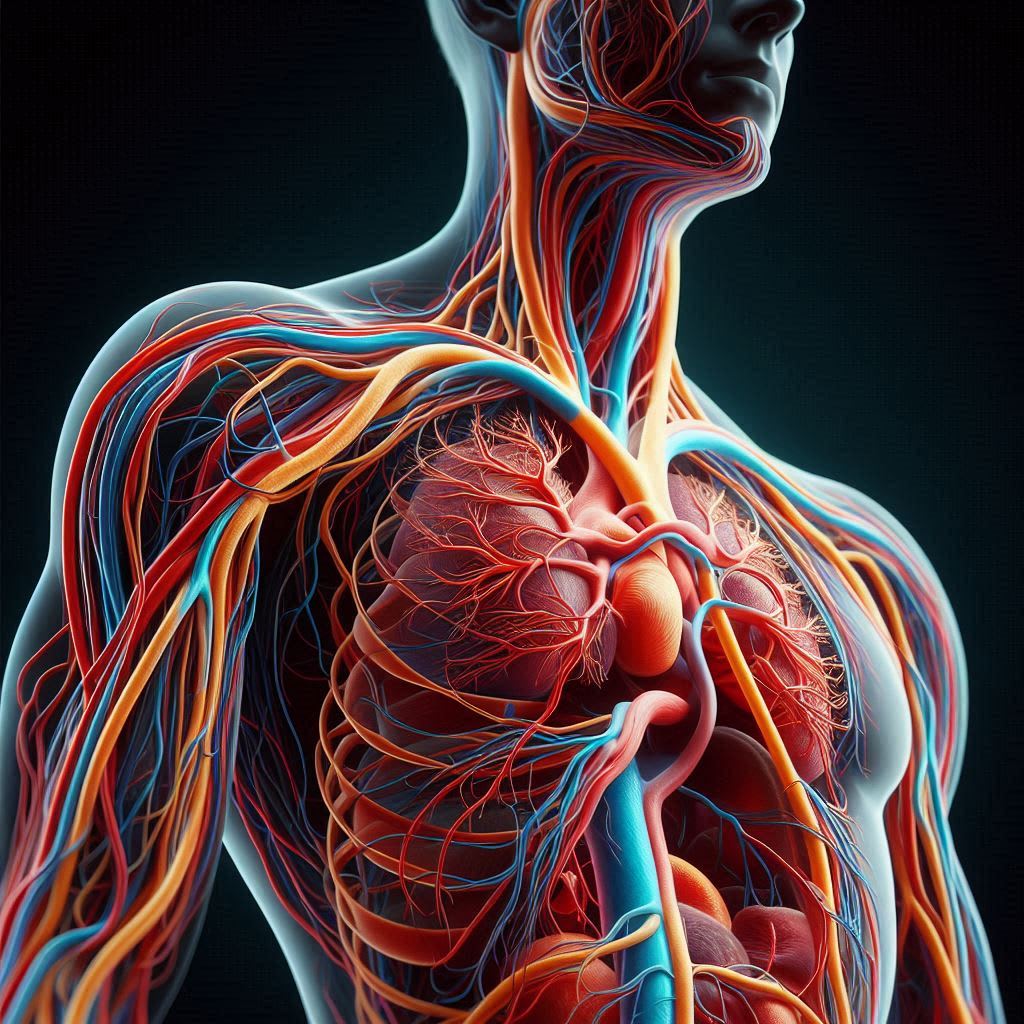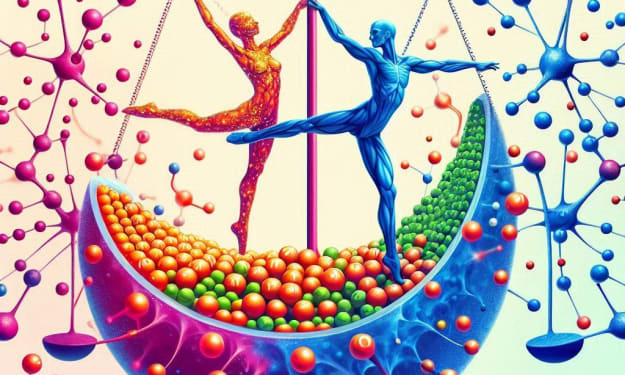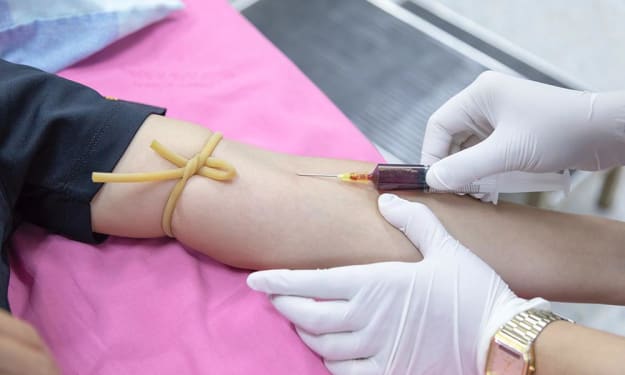Vital Waterways
Unveiling Your Body's Blood Vessel Network

The Mighty Network: Unveiling the Wonders of Blood Vessels and Their Impact on Our Health
Blood vessels – the silent heroes of our circulatory system. These intricate tubes weave a remarkable network throughout our body, faithfully transporting the lifeblood that sustains our every cell. But have you ever stopped to consider the intricate dance these vessels perform to keep us alive? Buckle up, because we're diving deep into the fascinating world of blood vessels, exploring their structure, function, and the vital role they play in our health.
Why Should This Matter to You?
Every single one of your trillions of cells relies on blood vessels to function. They deliver the oxygen and nutrients your cells crave, and whisk away waste products that could otherwise become toxic. Disruptions in this intricate network can have a profound impact on your health, leading to conditions like heart disease, stroke, and even chronic wounds. Understanding how blood vessels work empowers you to make informed choices about your health and well-being.
The Three Musketeers: Arteries, Veins, and Capillaries
Our vascular system comprises three main types of vessels, each playing a distinct role:
- Arteries: Imagine these as the highways of the circulatory system. Arteries carry oxygen-rich blood away from the heart, their thick, muscular walls equipped to handle the surging pressure. The aorta, the largest artery, emerges from the left ventricle of the heart, branching out into a progressively smaller network of arteries that reach every corner of your body.
- Capillaries: These are the workhorses of the system, forming a dense network throughout your tissues. Capillaries have walls just one cell thick, allowing for the vital exchange of gases, nutrients, and waste products between your blood and surrounding cells.
- Veins: Once the vital exchange has occurred in the capillaries, deoxygenated blood needs to return to the heart. Veins, with their thinner walls and valves that prevent backflow, act as the return vessels, carrying this blood back to the heart for re-oxygenation.
A Deep Dive into Vessel Structure
The walls of blood vessels, though varying in thickness depending on the vessel type, share a common basic structure:
Tunica Intima: This innermost layer, composed of a single layer of endothelial cells, provides a smooth surface for blood flow and acts as a barrier between blood and vessel wall.
Tunica Media: The middle layer, made up of smooth muscle cells and elastic fibers, is responsible for regulating blood flow and vessel diameter.
Tunica Adventitia: The outermost layer, composed of connective tissue, provides support and structure to the vessel.
From Highways to Byways: A Closer Look at Each Vessel Type
Let's delve deeper into the unique characteristics of each vessel type:
Arteries: As mentioned earlier, arteries have thick, muscular walls to withstand the high pressure of blood pumped from the heart. They are further categorized based on size and structure:
Elastic arteries: These large arteries, like the aorta, have a high concentration of elastic fibers in their walls, allowing them to stretch and recoil with each heartbeat, cushioning the flow of blood.
Muscular arteries: These medium-sized arteries have a thicker layer of smooth muscle cells, enabling them to constrict and dilate in response to various factors, regulating blood flow to different organs.
Arterioles: These tiny arteries act as control points, regulating blood flow to capillary beds through precapillary sphincters – muscular rings that open and close.
Capillaries: These microscopic vessels are the champions of diffusion. Their thin walls allow for the seamless exchange of oxygen, nutrients, waste products, and even white blood cells between the blood and tissues. There are three main types of capillaries:
Continuous capillaries: These are the most common type, with a single layer of endothelial cells forming a tight barrier that regulates the passage of molecules.
Fenestrated capillaries: Found in specific tissues like the kidneys and intestines, these capillaries have tiny pores in their endothelial cells, allowing for the passage of larger molecules.
Sinusoidal capillaries: These highly permeable capillaries, found in the liver and spleen, have large gaps between endothelial cells, enabling the exchange of even larger molecules and cells.
Veins: Unlike arteries, veins have thinner walls with less smooth muscle and elastic fibers. This is because they carry blood at a lower pressure. However, veins have valves that prevent blood from flowing backward. Veins can be further categorized:
Venules: These tiny veins collect blood from the capillaries and merge to form larger veins.
Medium veins: These veins have a well-developed outer layer and a thin inner and middle layer.
Large veins: These veins, like the vena cava, have a thicker inner layer and prominent smooth muscle in the outer layer to aid in blood flow.
The Fragile Balance: Blood Vessel Diseases and Potential Solutions
While blood vessels are remarkable in their design and function, disruptions in this intricate network can lead to a variety of health problems. Here are some common blood vessel diseases:
- Atherosclerosis: This condition, also known as hardening of the arteries, is caused by the buildup of plaque – a fatty deposit – on the inner walls of arteries. Plaque buildup narrows the arteries, restricting blood flow and increasing the risk of heart attack and stroke.
- Thrombosis: A blood clot that forms within a blood vessel is called a thrombus. Thrombosis can be dangerous because it can block blood flow and lead to tissue death. Blood clots can form in arteries (arterial thrombosis) or veins (venous thrombosis). Deep vein thrombosis (DVT) is a particular concern, as these clots can break off and travel to the lungs, causing a potentially fatal blockage called a pulmonary embolism.
- Aneurysms: These are weak spots in the wall of a blood vessel that cause it to bulge outward. Aneurysms can occur in any type of blood vessel, but they are most common in the aorta. A ruptured aneurysm can cause life-threatening internal bleeding.
The good news is that research is constantly pushing the boundaries of treatment and prevention for these conditions. Here are some exciting advancements:
- Minimally Invasive Procedures: Angioplasty, a procedure where a tiny balloon is inserted into a blocked artery to widen it, is a common example. However, researchers are developing even less invasive techniques, such as using lasers or ultrasound to target and remove plaque buildup.
- Gene Editing for Vascular Health: The revolutionary field of gene editing has the potential to revolutionize vascular health. Scientists are exploring the possibility of editing genes that contribute to atherosclerosis or other vascular diseases, potentially preventing them from developing altogether.
- The Microbiome Connection: The trillions of microbes living in our gut, collectively known as the gut microbiome, are increasingly recognized for their impact on overall health. Emerging research suggests a link between an unhealthy gut microbiome and increased risk of vascular diseases. Understanding this connection could lead to the development of new preventative and therapeutic strategies.
Beyond the Basics: The Impact on Our Lives
Our understanding of blood vessels underpins numerous medical advancements that impact our lives daily. Here are a few examples:
- Diagnostic Tools: Angiograms and ultrasounds are imaging techniques used to visualize blood vessels and identify blockages or other abnormalities. These tools are crucial for diagnosing vascular diseases and planning treatment strategies.
- Artificial Organs: The development of artificial organs relies heavily on an understanding of blood flow and vessel structure. Researchers are creating biocompatible materials to mimic the function of blood vessels and ensure proper oxygen and nutrient delivery to transplanted organs.
- Personalized Medicine: Understanding the genetic and lifestyle factors that contribute to vascular health allows for a more personalized approach to medicine. Doctors can tailor treatment plans and preventative measures based on an individual's risk factors.
A Call to Action: Empowering Your Vascular Health
By understanding the vital role blood vessels play in our well-being, we can take proactive steps to safeguard our vascular health. Here are some tips:
- Maintain a Healthy Lifestyle: A balanced diet, regular exercise, and adequate sleep are essential for maintaining healthy blood vessels.
- Manage Chronic Conditions: Conditions like high blood pressure, diabetes, and high cholesterol can increase the risk of vascular diseases. Working with your doctor to manage these conditions is crucial.
- Don't Smoke: Smoking is a major risk factor for vascular diseases. Quitting smoking is one of the most impactful things you can do for your vascular health.
By making informed choices and working with your healthcare provider, you can empower yourself to maintain a healthy and well-functioning vascular network – the silent hero keeping you alive and well.
About the Creator
suren arju
Hi there! I'm Suren, your startup guide. Entrepreneur, writer, dreamer - I share insights, tips & stories to fuel your startup journey. Ready to explore, learn & win together? Join me & let's redefine how we launch, learn & leap!
Enjoyed the story? Support the Creator.
Subscribe for free to receive all their stories in your feed. You could also pledge your support or give them a one-off tip, letting them know you appreciate their work.





Comments
There are no comments for this story
Be the first to respond and start the conversation.